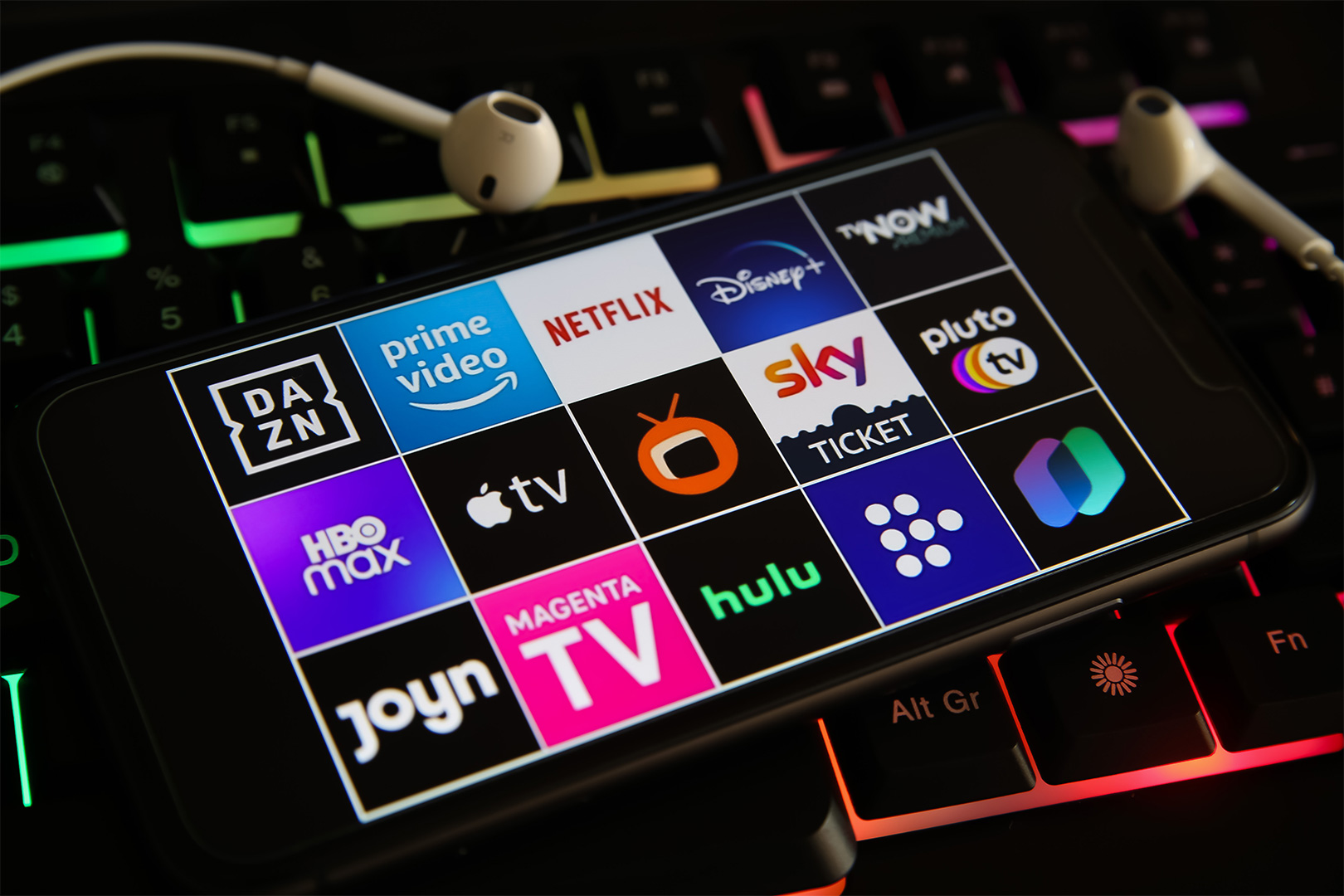
For the first time, streaming is predicted to overtake traditional TV as the preferred form of entertainment for U.S. adults.
According to Insider Intelligence, this year nearly 53% of video consumption time will be spent on streaming services and social media platforms compared to traditional TV. The biggest factor playing into the new change lies in streaming’s personalization capabilities, says Bo “Bobby” Zhou, associate professor at the University of Maryland’s Robert H. Smith School of Business.
“Each viewer can enjoy tailored content even if they are streaming on different devices in the same room. Traditional cable simply cannot replicate such personalized experiences,” Zhou says.
To Zhou, the companies best positioned for success through this shift are Netflix, TikTok and YouTube. All three are already capturing the attention of U.S. adults and their gains will likely continue due to teenagers’ preference for social media and streaming.
Netflix still holds an advantage in the long-video domain because it strategically invested in first-party content long before its competitors caught on. It also benefitted from a robust and effective recommendation system that improved the user viewing experience by reducing consumers’ search costs to find interesting shows. House of Cards and Squid Game are quintessential examples of shows based on massive data analysis of Netflix’s audience.
“To some extent, Netflix has created a positive cycle, where a huge amount of data on viewer preferences improves its ability to create hit shows, and these shows further provide information on the changing landscape of viewers’ tastes,” says Zhou.
In the short-video domain, TikTok reigns supreme. Unlike Netflix or YouTube, TikTok capitalized on two major factors amongst young consumers – decreasing attention span and ease of content creation. Zhou says those two factors combined “have helped TikTok achieve incredible growth and financial success.”
Google’s financial resources and brain power have helped it stay in the leader’s pack of streaming services for almost two decades. Unlike Netflix and TikTok, its unique strengths are its attractiveness to advertisers and the ability to collaborate with other content providers like CBS and ESPN. That bodes well for the company as it continues efforts to expand beyond mobile devices through YouTube TV, adding premium content with YouTube Primetime and hosting NFL Sunday Ticket this coming fall.
YouTube’s acquisition of NFL Sunday Ticket, along with Amazon’s Thursday Night Football streams, Apple TV’s Friday Night Major League Baseball broadcast and other live sports streaming services, are significantly impacting one of traditional TV’s major remaining drivers of viewership.
Data from Nielsen shows that 92 of the 100 most-watched programs on TV in 2022 were live sports, with the NFL accounting for 82 of the spots. Investing more into acquiring the rights to live sports will prove critical in sustaining the growing popularity of streaming platforms, especially given that, according to Zhou, they provide “extremely valuable social moments.”
“If streaming platforms can nicely integrate live sports, they can even expand these “together moments” by allowing viewers from different locations to enjoy the same live content together. That will create a whole new experience and it will be practically impossible for cable TV to come back to where it was years ago.”
The road ahead for streaming is paved with questions for marketers and consumers alike. Marketers will need to balance extrapolating viewers’ preferences from their comments and a show’s content to provide more relevant products and services. This must be done while respecting consumer data privacy and providing transparency.
Consumers, on the other hand, will make decisions in light of recent price hikes across streaming platforms. Zhou says two things can happen – one is that more ads will be displayed on more platforms and consumers will become accustomed to seeing them. The other is that viewers choose streaming services that focus on particular interests, such as HBO with its premier TV shows and movies or Disney+ with its children’s programming.
“We need to better understand younger consumers’ viewing habits, and in general, their entertainment preferences,” says Zhou. “What will happen is that consumers will decrease their multi-homing behavior by keeping only a couple of their favorite streaming platforms.”
Media Contact
Greg Muraski
Media Relations Manager
301-405-5283
301-892-0973 Mobile
gmuraski@umd.edu
Get Smith Brain Trust Delivered To Your Inbox Every Week
Business moves fast in the 21st century. Stay one step ahead with bite-sized business insights from the Smith School's world-class faculty.